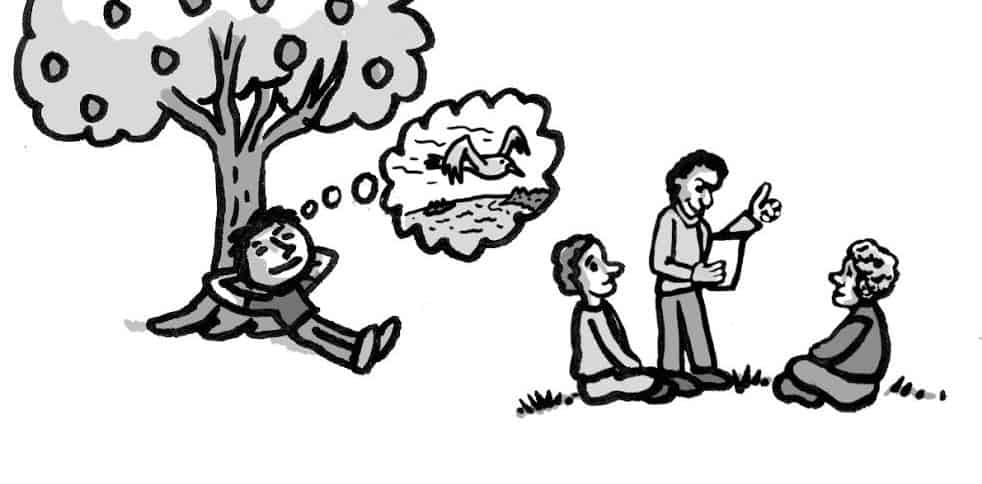How can we create more meaning in our everyday work?
How can we make routines to contribute to the intention of wellness for people, work, projects, communities and economies for an enlightened future society? Try following these practice cards, for a start.
1. Positivity – create flow instead of a negative first approach
“Businesses are often conservative by nature and avoid taking risks. But the world needs big thinkers and big dreamers—people who are willing to look beyond the day-to-day operations and current constraints and look for ways to inspire.”
Practice: List 5 positives in a situation to discuss with others.
2. Listening and learning – actively listen first and be present before sharing your opinions
“Forming a relationship with a person means viewing that person as an equal: a human being who can contribute actively to these conversations.”
Practice: Listen before speaking to better understand the other person first and remember that you have two ears to practice with.
3. Biases – be explicitly aware of your own biases
“In identifying assumptions, a team takes a pause from their work to reflect on the evidence they’ve gathered, the approaches they’ve taken, the experiments the project has generated, and the team’s own reasoning to identify their biases and open their minds to external criticism.”
Practice: List 5 assumption or fears to challenge and discuss with others.
4. Define the problem – understand the problem to be solved before proposing solutions
“In defining our intentions, team members take the time to interact with one another and their stakeholders and share existing knowledge. They develop a plan and agree upon a project’s focus, exploring how it will determine the quality of project outcomes.”
Practice: List out 5 attributes of a problem and then list out a contributor to each attribute.
5. Magic in the nuance – deconstruct extreme statements and look for the useful nuances
“When sharing observations, a team comes together to read stories about people’s behavior and record them in the team’s collective memory. This routine enables a team to identify surprising or deeply memorable situations that deserve further analysis by the whole team.”
Practice: Take an extreme statement and list 5 questions you would like answers to.
6. Commonalities before differences – find common connections between people, roles and teams
“When people experience positive emotions, there may be opportunities to bridge them quickly to another positive moment and link up to this goodness through design. If people experience negative emotions, there may be opportunities to devise techniques to address them. We need to be able to assess people’s feelings, from moment to moment, and to understand the approaches that get the best from the people around us.”
Practice: Introduce yourself to a person in another team and learn more about what their job entails.
7. Continuous life learning – seek out incremental improvement instead of massive change
“To that end, we need to get out of our cubicles, get out of the building, and learn how our products and services fit into real people’s lives. To communicate our understanding of human needs, we need to capture rich stories in the voice of the customer, as well as photos and videos. We must encourage businesses to foster constant curiosity about how they can serve people better.”
Practice: Read 1 article per week and share what you’ve learned with others.
This article was originally published for UXmas – an advent calendar for UX folk. Catch up on all 24 posts at uxmas.com.












